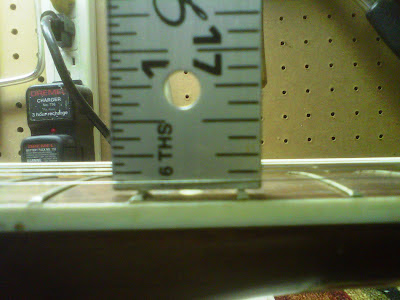There's a riot goin' on
Up in cell block number nine.
A few weekends ago, I turned my attention back to the neck block. The plan was to clean out all of the plastic, epoxy, or whatever Jay Turser used in the dovetail joint. The Dremel sanding and cutting tools I had were not up to the task, so I made a quick trip to the store for a couple of new attachments. After a few minutes of grinding, I saw how far I needed to go to get down to the wood.
After about a half hour, I had cleaned out all I was going to take out of the neck block. After a few more minutes with a rough flat file and some sanding, it was looking like half of a a dovetail joint again. Time to return to the neck heel.
After cleaning out the neck block, I decided to abandon the idea of converting the dovetail joint into a simple tenon joint, and decided to try building up the heel to make the dovetail. As it is such a shallow dovetail, it might not be able to resist the tension force of the strings wanting to rotate the neck upwards and out of the joint. That's where the bolt comes into play. More about that after I get the heel built up and reshaped.
Here are some shots from the past few days along the journey of getting clever with quick-clamps and oak to rebuild the heel. Since wood has non-isotropic properties, I was careful to orient the grain of the new pieces to be parallel to the length of the neck to provide the highest strength value in compression.
Next time, I'll start shaping the neck heel into a dovetail tail so it will fit into the endblock.




























